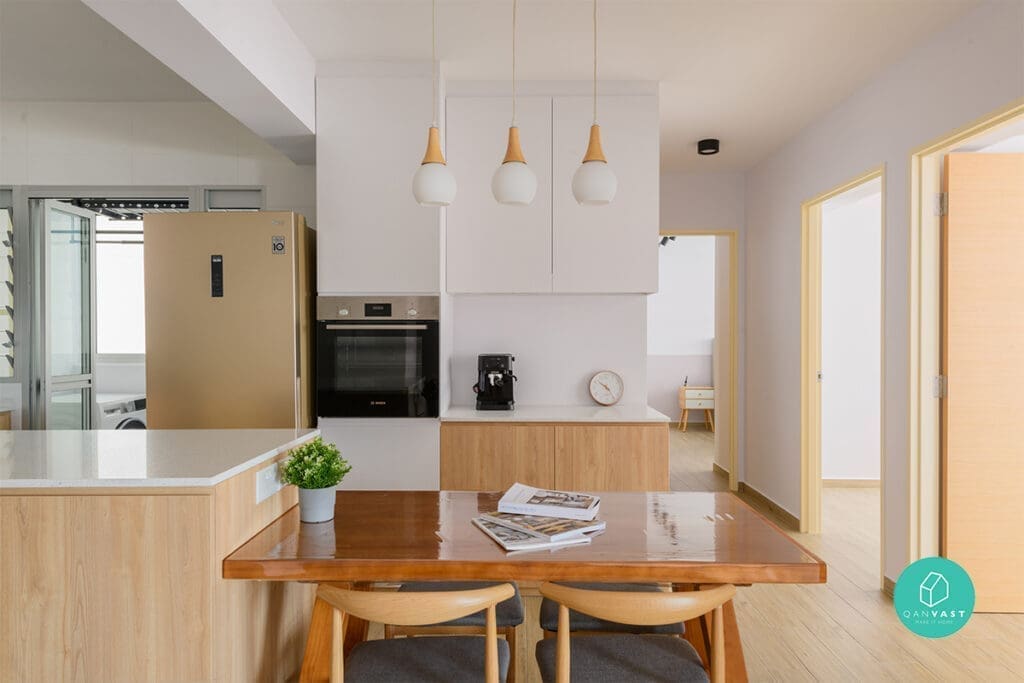Table of Contents
Toggle Or, maybe you have a small kitchen and it works just fine for you. Whatever. I want to help you in either case. That’s why I have written a simple, easy-to-read guide that will show you how to get your kitchen cabinets shelves back in control. You will learn how to…
Store frequently used items like cookbooks and spices in high-traffic areas near the stove and the refrigerator. Keep less often used items like boxes of cereal and cans of soup in low-traffic areas out of the way. Use clear, labeled bins or cupboards to keep everything neat and tidy.
Or, maybe you have a small kitchen and it works just fine for you. Whatever. I want to help you in either case. That’s why I have written a simple, easy-to-read guide that will show you how to get your kitchen cabinets shelves back in control. You will learn how to…
Store frequently used items like cookbooks and spices in high-traffic areas near the stove and the refrigerator. Keep less often used items like boxes of cereal and cans of soup in low-traffic areas out of the way. Use clear, labeled bins or cupboards to keep everything neat and tidy.
Things You Need to Consider Before Organizing Your Kitchen Cabinets
- Drawer pulls, choose from a variety of materials and styles. Some people like wooden, some people prefer plastic, some like brass, etc.
- Cabinet knobs, also choose from a variety of materials and styles. Some people like wooden, some prefer plastic, some like brushed metal, etc.
- Counter depth refrigerators, consider getting one of these instead of a standard upright fridge. The main advantage is the drawers on the inside of the door are much deeper, so you won’t have to reach as far when you are trying to get something.
- Pull out shelves, these are often built into the kitchen cabinets above the countertop. They give you another place to display your dishes, pots and pans and give you more surface area to work with.
- Pegboard hooks, you can put these on the wall over your countertop or in the cabinet above it. Use them to hold recipes, organizing charts.
- Keep all garbage and trash out of sight. Do not put garbage or trash in the kitchen cabinet where your family will have to search for it when they are cleaning up. Instead, keep it in a sealed, outside bin.
- Use plastic wrap to cover all sharp objects that could cause injury if a child were to accidentally grab them. Put these objects, such as table knives, on high surfaces, out of reach.
- Use masking tape to cover the labels on all chemicals you use around the house. This includes cleaners, pesticides, and other products with strong odors. Tape the label to the container, and then put the container into a high place, out of reach of children.
- Make sure all medications are stored in a safe place. Have your child show you where they are kept. Make sure there is nothing within easy reach of the child that can be ingested. Keep all containers tightly closed. Store all medications in.
How to Keep Your Kitchen Clean and Organized Kitchen Cabinets
As you know, keeping your house clean is one of the keys to feeling good about yourself and your life. However, many of us struggle with this. We feel overwhelmed by the amount of work involved and we give up trying to keep the place clean. And this leads to a vicious cycle of guilt, frustration and depression. But there is a way out of this cycle. The solution is simple — if you make a decision to do it. It won’t take much “mental energy” to make this decision. In fact, it will free up so much extra energy in your life that you will be able to do all kinds of wonderful things.- Put a trash can in each kitchen drawer. Make sure the trash cans are at least two inches higher than the tops of the drawers. This will force you to remove all the trash from the drawers before you can put anything else into them. This helps keep your kitchen clean.
- Put all paper products (including printer paper) into one container. Then, put that container in the trash.
- Put all metal containers (like those used for sugar, flour, or other non-perishable food items) into another container. Then, put that container in the trash.
- Keep all refrigerators in your home stocked with all the items you use regularly. Make sure each item is stored in its own individual compartment or storage bin. If your refrigerator has separate compartments, use them. This will make it much easier to keep everything organized and easy to find when you need it.
- If your kitchen has a dishwasher, use it every time you wash the dishes by hand. This will cut down on the amount of dirt and grime you get on your hands. It also gives you a chance to practice doing the dishes without using any detergent whatsoever. Not only will this help keep your kitchen clean, it will also give you more control over the chemicals you are putting on your skin.
- Keep a container of all-purpose cleaner (like Simple Green) in each of your kitchen drawers. Use this to clean spills and remove grease and other types of dirt and grime immediately instead of waiting for it to dry and become hard like other dirt.
- Put all garbage cans in your house at least two miles away from your kitchen. If you use plastic garbage cans, put them at least five miles away from your kitchen. This will force you to get rid of the garbage that otherwise would have ended up in your home.
- Keep your pantry well-stocked with all the items you use regularly. Make sure each item is stored in its own individual compartment or storage bin. If your pantry has separate compartments, use them. This will make it much easier to keep everything organized and easy to find when you need it.
- If you have a family, get everyone in your family to do at least one “spring cleaning” of their own room every year. Have them remove everything from their walls and dressers that is not needed. Have them throw out or give away anything that is not being used regularly. This will eliminate a lot of unnecessary clutter that builds up over time.
- Remove all unused items (including remote controls) from the surfaces in your home where children are likely to reach for them. Remotes are one of the main causes of missing children. When someone picks up a remote and turns the television on or changes the channel, the child’s attention is immediately diverted from whatever else he or she was doing and the child is distracted from the parent.
- Do at least one load of laundry every day. This will cut down on the amount of wrinkles you develop in your clothing and keep your laundry room clean and uncluttered.
- Keep your car well-stocked with all the items you use regularly. Make sure each item is stored in its own individual compartment or storage bin. If your car has separate compartments, use them. This will make it much easier to keep everything organized and easy to find when you need it.
- Get rid of anything in your garage that is not regularly used. This will make it easier to get to everything else that is stored there.
- Use a broom instead of a dust rag to sweep. Dusting with a dust rag only collects dust while a broom removes dust and dirt from the floor, walls, and other surfaces in your home.
- Keep a container of all-purpose cleaner (like Simple Green) in the kitchen and bathroom. Use this to clean spills and remove grease and other types of dirt and grime immediately instead of waiting for it to dry and become hard like other dirt.
- Keep a box of wooden matches and a pack of wooden matches next to your bed. If you wake up in the
Organization Ideas for a Small Kitchen
Having a well-organized kitchen is crucial for any cook. In fact, a messy or disorganized kitchen can seriously impede your ability to prepare healthy meals. That’s why it’s important to know some simple kitchen organizing ideas that don’t require spending a fortune. These tips will help you keep your kitchen clean and uncluttered, without having to buy fancy newfangled gadgets or make drastic changes to the way you do things.- Label all the containers with the contents and date
- Use different colors for each category (pantry, cupboards, refrigerator, freezer) – red for cereals, yellow for crackers, etc.
- Put all spices in one area
- Put all baking ingredients in another
- Store foods that don’t require refrigeration (like nuts and dried fruit) in a cool place (basement, garage, or outside on a deck)
- Use a dry erase marker to mark the inside of the door of each cabinet/cupboard – use one color for fruits and vegetables, another for dairy, bread, and so on
- Keep a notebook near your small kitchen where you can write down any special recipe ideas you get, or any unusual cooking techniques you learn
- If you like to cook, get yourself a good set of cookbooks. I have collected hundreds
Wrap Up!
In this post, you already learn: How to quickly and easily organize your kitchen cabinets shelves… so they are easy to find everything you need. What items you should have on hand… before you start to organize your kitchen cabinets. And why being prepared will make your cabinet organizing job much easier. Remember these three things when you are organizing your kitchen cabinets:- Keep it simple.
- Keep it logical.
- Don’t make it too hard on yourself. Let’s get started. The first thing you need to do is remove all the items from your kitchen cabinets. Next, go around the room and ask each of your family members to tell you what stuff they always seem to keep in their kitchen cabinets.





